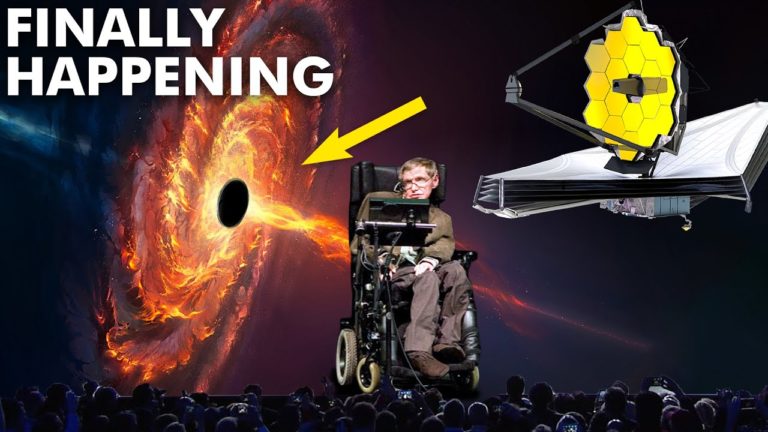James Webb Telescope Terrifying Image of The Big Bang Will Rewrite Physics!
There is no recent event in space and astronomy that comes close in hype to the launch of the James Webb Space Telescope! After a wait that seemed like an eternity and tortured people in the scientific community, the new and powerful space telescope has made its way to its location, where it will use its large lens to capture mind-blowing images of the universe!
Some of the pictures will be the much acclaimed Big Bang, giving scientists their best chance ever to understand the great event that started it all! However, why do we need to understand the Big Bang, and how will the James Webb Space Telescope help us do that?
We dive into the terrifying pictures that the James Webb Space Telescope will take and how it changes everything! You have probably gazed up at the sky and wish you could get a closer look at them! That has been the dream of humanity for a long time, and we have sent lots of space telescopes up there to give us better looks at the stars and other celestial bodies! Popular spaces telescopes include the Solar and Heliospheric Observatory, SOHO, which has spent the last 25 years looking at the sun!
Another one is the Chandra, the world’s most powerful X-ray telescope. Chandra, named for Indian-American physicist Subrahmanyan Chandrasekhar, examines the X-rays emitted by some of the universe’s strangest objects, including quasars, immense clouds of gas and dust, and particles sucked into black holes. It was launched in 1999 by NASA. The granddaddy of space telescopes was the Hubble, which has been observing from Earth orbit for more than 30 years! Hubble, the first of NASA’s Great Observatories, has revolutionized astronomy, providing stunning images of countless cosmic objects and giving astronomers their most distant views of the universe with the Hubble Deep Field and Ultra Deep Field!
Hubble has meant so much during its 30-year run. For one thing, it’s sent us unforgettable, jaw-droppingly beautiful images like those of the Lagoon Nebula and the Pillars of Creation! However, none of these space telescopes are as powerful as the James Webb Space Telescope, which launched last December! Basically, you can say the JWST represents the culmination of decades, if not centuries, of astronomy!
The JWST project was originally supposed to launch in 2010 and cost around $1 billion. Its price tag ballooned to $10 billion, and it was way overdue. But the wait would be more than worth it! The JWST improves on Hubble in two key ways. The first is the sheer size! While the Hubble was about the size of a school bus, the JWST is more like the size of a tennis court!
It is so enormous that it is by far the biggest telescope NASA’s ever attempted to send into space! But the size is not the only improvement here that matters. When you are building a reflecting telescope, the key component is the size of its curved mirror. The telescope mirror is like a light bucket. The more light you can collect in your bucket, the fainter and farther-away things you can see in the universe!
Hubble’s mirror was an impressive 7.8 feet in diameter. JWST, however, surpasses that with its beautiful, gold-hued mirrors that combined form a diameter of 21.3 feet! Overall, that gives the JWST more than six times the light-collecting area of the Hubble! The JWST has other advantages making it more powerful than the Hubble. One of them is the type of light it collects. You see, light comes in a lot of different varieties.
The human eye can see only a narrow band known as visible light, but the universe contains lots of light outside this range, including the higher-frequency, higher-energy forms known as ultraviolet gamma rays. Then there’s the lower-energy light with longer wavelengths: infrared, microwaves, radio.
The Hubble collects visible light, ultraviolet, and a little bit of infrared, but the JWST is primarily an infrared telescope, so it sees the light that is in a longer wavelength than what our eyes can see. This is what allows Webb to look further back in time than the Hubble, and we will get to how this affects the Big Bang in a moment!
While one reason for all the launch delays had to do with contractor snafus and political interference, a big source of all of them is the complexity of the telescope itself!
Due to its size, there weren’t any rockets that were big enough to launch it fully deployed. So the telescope had to be folded up to fit inside a rocket! Upping the stakes is the fact that while Hubble sits around 340 miles above the Earth, the JSWT will be almost a million miles away, four times the distance from the Earth to the moon!
It means human hands cannot fix the JWST if it breaks! That’s scary for a 10 billion dollar asset, especially if you consider the history of the Hubble! Shortly after the Hubble launched in 1990, engineers realized there was a problem with its mirror; the telescope’s initial images came back fuzzy, and astronauts had to launch a space shuttle to fix it!
Do not forget to share your opinion with us to provide you with the best posts !




0 Comments